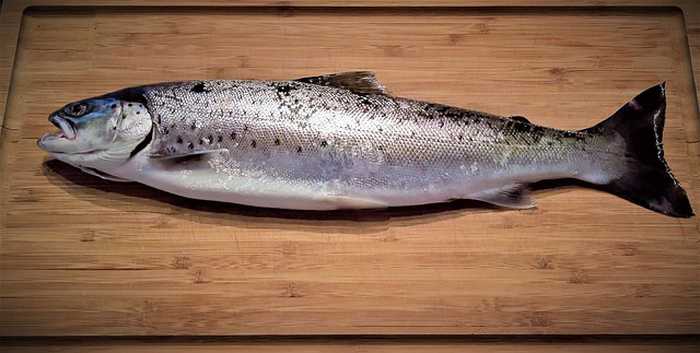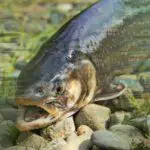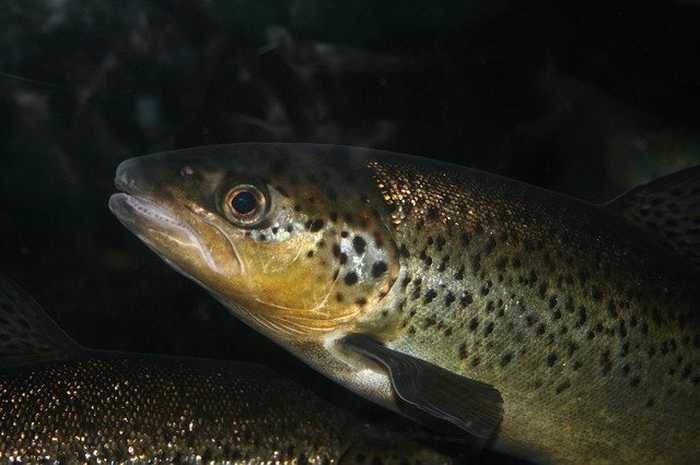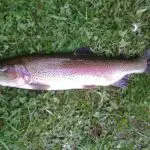As any experienced fisherman knows, the type of line used can make a big difference in terms of success. But what about the color of the line? Does it really matter what color fishing line you use?
It turns out that fish can actually see the fishing line, so the answer is yes – the color of your line does matter. You also have to consider how a certain color looks underwater, as it may appear different than on dry land.
For example, lighter colors like white or yellow may be more visible in clear water, while darker colors like green or blue may be better in murky water.
So what’s the best color fishing line to use? It depends on a number of factors, including the type of fish you’re trying to catch and the conditions of the water.
Experienced fishermen often have several different types and colors of fishing line on hand, so they can adapt to whatever situation they find themselves in.
What is the best color for fishing line?
There is no one-size-fits-all answer to the question of what is the best color for fishing line. Different anglers have different preferences, and what works well in one situation may not be as effective in another. That said, green is generally a good choice for many different fishing scenarios.
One reason green is a good choice is because it can help to camouflage the line. This can be especially helpful if you are trying to keep your line invisible to fish. In some cases, however, green may be more visible than clear lines in very clear water. Overall, though, green is a good option for many different types of fishing situations.
Does the color of fishing line make a difference?
No single color of fishing line has ever been shown to make fish more likely to bite. However, that doesn’t mean that fishermen shouldn’t be mindful when choosing their line.
Different colors can have different effects on visibility and other factors, so it’s important to select the right line for the conditions you’ll be fishing in.
What color line is invisible to fish?
As any angler knows, the right line can make all the difference when it comes to success on the water.
And according to manufacturers, clear fluorocarbon line is reportedly the most invisible line on the market. This type of line is said to have the same light refraction properties as water, making it virtually invisible to fish.
So if you’re looking for a little extra edge next time you hit the lake or river, be sure to give fluorocarbon a try.
Does line color matter for bass?
Bass anglers are always looking for an edge, and one question that is often debated is whether line color matters. Studies have shown that bass have strong color vision in medium to light reds, red-orange and yellow-greens.
However, they don’t see blues and purples very well. So, when fishing in deep or murky water, it’s best to use a line that will be visible to the fish.
Do fishes notice line color?
Fishing line is an important tool for anglers, and the question of whether or not fish can see it is a common one. The answer is yes – fish can see the line.
There are three main types of fishing line, monofilament, braided and fluorocarbon, and each has its own benefits.
Monofilament lines are popular because they’re affordable and easy to use. Braided lines are strong and provide good sensitivity, while fluorocarbon lines are nearly invisible in water and offer excellent abrasion resistance.
Ultimately, the best type of fishing line to use depends on the conditions you’ll be fishing in and your personal preferences.
How do fish know what color they are?
Most fish have developed eyesight that allows them to detect the colors typically found in their environment.
For example, inshore fish generally have good color vision, while offshore pelagic fish usually have limited color vision and can only see a few colors other than black and white.
So how do fish know what color they are? It’s believed that they use their eyesight to compare themselves to their surroundings and determine which colors stand out the most. This helps them to camouflage themselves from predators and find mates.
What color fishing line can fish not see?
It’s a common belief that green is the best color for fishing line, as it is less visible to fish. However, recent studies have shown that blue fishing line may actually be less visible to fish in deep water conditions.
This is due to the way light behaves underwater – blue light tends to be scattered more than other colors of light, making it more difficult for fish to see. So if you’re looking to catch fish in deep water, blue may be the best color for your fishing line.
Do fish see colored fishing line?
When it comes to the color of fishing line, many anglers ask themselves: can fish actually see it? The logical answer is yes – if fish couldn’t see the line, you would only have one color choice.
In reality, there are three main types of fishing line: monofilament, braided and fluorocarbon. Each type has its own benefits and drawbacks, so it’s important to choose the right one for your needs.

Can fish see your fishing line?
When it comes to the color of fishing line, many anglers wonder if fish can actually see it. The answer is yes – fish can see the line. If they couldn’t, you would only have one color choice when it comes to your line.
There are three main types of fishing line – monofilament, braided and fluorocarbon – and each has its own benefits.
Which fishing line is least visible?
Fluorocarbon fishing line is the least visible type of fishing line available on the market today. This makes it an ideal choice for anglers who want to avoid spooking fish with their line. Fluorocarbon is also very strong and abrasion-resistant, making it a good choice for fishing in heavy cover or around structure.
Can fish see colored fishing line?
Many anglers wonder if fish can see the color of fishing line. The answer is yes, fish can see the line. If that wasn’t the case, you would only have one color choice. There are three main types of fishing line, monofilament, braided and fluorocarbon.
What color attracts fish the most?
When it comes to fishing, one of the most important factors is choosing the right bait. And while there are many different colors of bait available, some are more effective than others. So, what color attracts fish the most?
Interestingly, green is often considered the best color for bait because it stands out in water and looks natural (unlike bright colors like red or orange). Additionally, green light penetrates water better than other colors, making it more visible to fish. So if you’re looking to attract fish when you go fishing, consider using green bait.
What is the best Colour fishing line to use?
One of the most important considerations when choosing a fishing line is its color. Clear monofilament is a good choice if you want to avoid spooking fish with a visible line.
Fluorocarbon lines are less visible underwater, making them ideal for clear water conditions. In muddy or stained water, however, a brightly colored line may be necessary to help you see your line and detect bites.
Ultimately, the best color of fishing line to use depends on the specific conditions in which you’ll be fishing.








